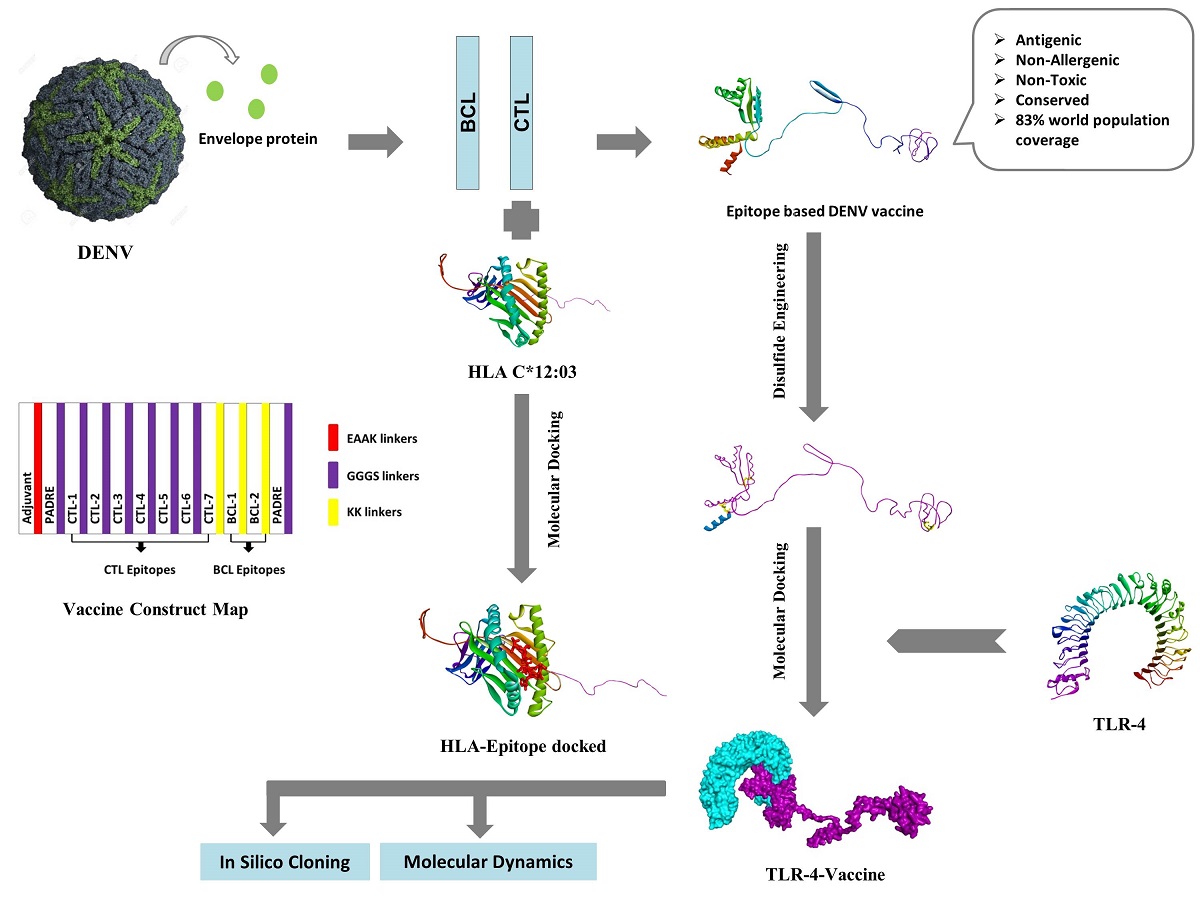Dengue is one of the life-threatening common neglected tropical diseases of the world, yet to develop any therapeutic for its treatment and prevention. Although there is a licensed vaccine reported, but becomes less efficacious due to the presence of multiple serovars of the dengue virus (DENV). Thus, an efficacious dengue vaccine potent to work against all the serovars is very crucial and time-demanding. Here we used a comprehensive hierarchical reverse vaccinology approach to design an epitope-based vaccine, targeted against multiple serovars of the DENV. Conservancy and population coverage analysis of the promiscuous epitopes revealed the robust immune response against multiple serovars of the DENV and various ethnicities. Final vaccine constructs comprising of B and T-cell epitopes, Universal pan-HLA DR or PADRE (AKFVAAWTLKAAA) sequence, and an adjuvant (β-defensin) at N-terminal of the construct with suitable linkers. Physiochemical properties and secondary structure profiling of the vaccine protein secured its hydrophilic, thermostable, and other structural nature. Molecular docking analysis indicates the deep binding of the proposed vaccine in the binding groove of the human immune TLR4 receptor present on the dendritic cell. In addition, disulfide engineering was coped to extend its stability. Furthermore, molecular dynamics simulation of the modeled vaccine-TLR8 complex showed minimum deformability. Finally, in silico cloning approach of the vaccine construct within an expression vector (pET28a+) assure good expression. Proposed vaccine may give novel insights for treatment of dengue patients.

